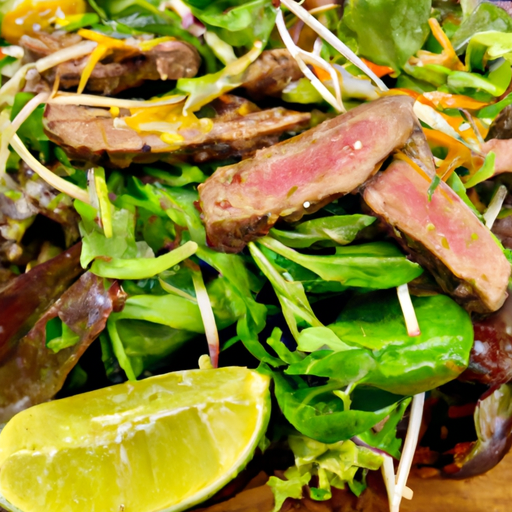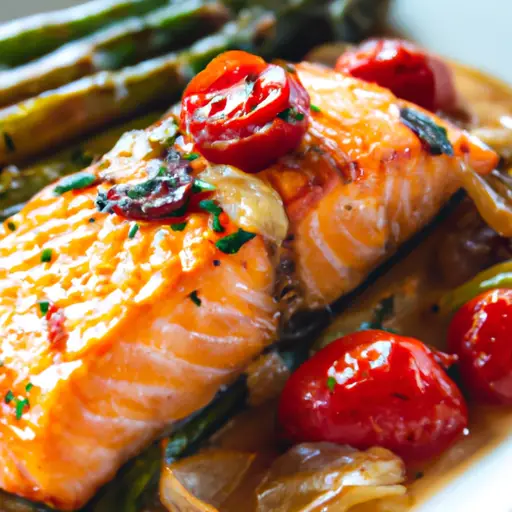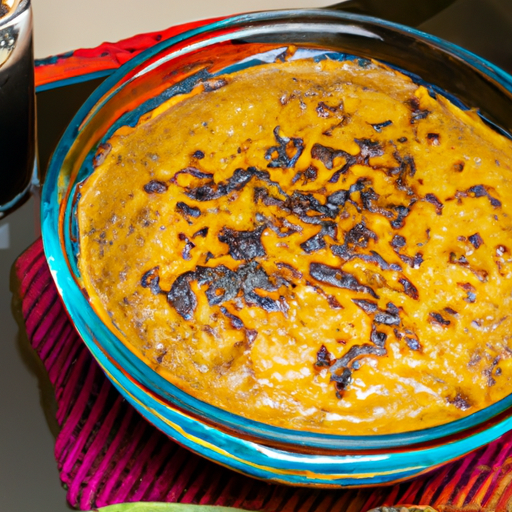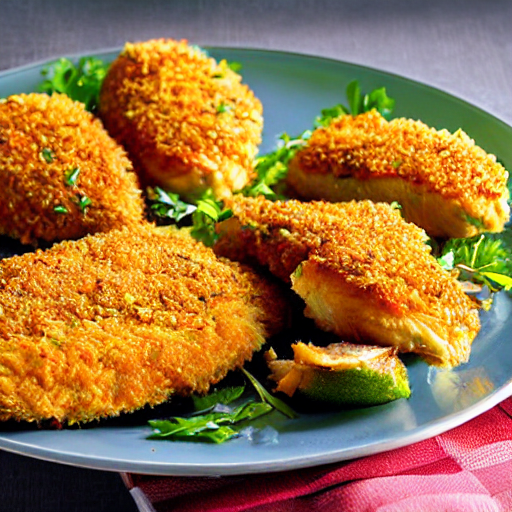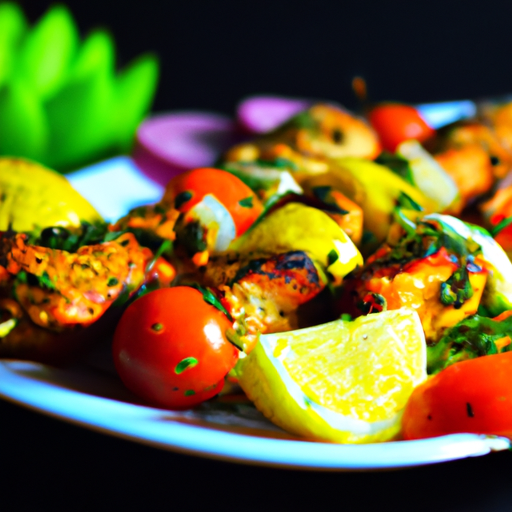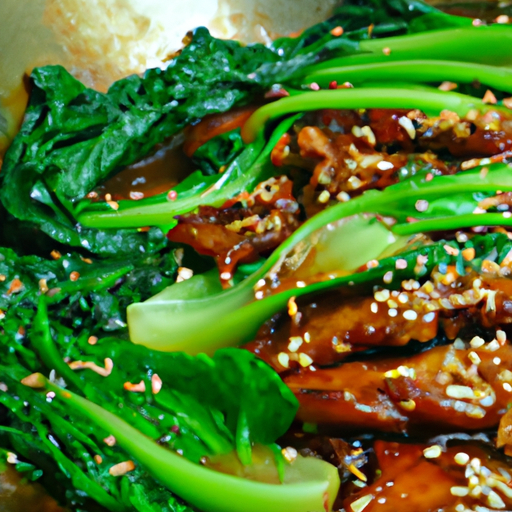Thai Steak Salad
Thai steak salad has its origins in Thai cuisine and is a combination of grilled steak and the vibrant flavors of traditional Thai ingredients.
A comprehensive guide to preparing this appealing dish is provided in the following. Utilizing an academic style, this guide is objective, impersonal, and omits personal pronouns.
The focus is on delivering factual information in a descriptive and detailed fashion, without any personal opinions or biases.
Thai Steak Salad Origins
The origins of Thai steak salad can be traced to traditional Thai cuisine, where the combination of grilled steak and fresh vegetables is a popular dish. This vibrant and flavorful salad displays a perfect balance between tender and juicy steak, crisp vegetables, and fragrant herbs.
The Thai people have always been fond of blending different textures and flavors in their dishes, and this salad is no exception. The succulent slices of grilled steak contribute a rich umami taste to the dish, while the fresh vegetables contribute a refreshing crunch. The use of aromatic herbs such as cilantro, mint, and basil elevates the overall taste profile of this salad, giving it a distinctive Thai twist.
In all, Thai steak salad is an exquisite fusion of ingredients that beautifully encapsulates the diversity and creativity within traditional Thai cuisine.
Ingredients for Thai Steak Salad
-1 large steak (sirloin, ribeye, or flank steak)
-2 tablespoons of fish sauce
-1 tablespoon of sesame oil
-2 tablespoons of soy sauce
-2 tablespoons of lime juice
-1 teaspoon of freshly grated ginger
-1 small red onion, thinly sliced
-1 red bell pepper, thinly sliced
-1/2 cup of fresh cilantro leaves
-1/4 cup of fresh mint leaves
-2 tablespoons of roasted peanuts, chopped
-1/2 cup of cooked jasmine rice
-1/2 cup of cooked edamame
-1/4 cup of sliced cucumber
-1/4 cup of shredded carrots
-Salt and pepper, to taste
Instructions
A crucial step in preparing this dish involves marinating the steak to ensure optimal tenderness and flavor. To achieve this, a combination of traditional Thai flavors are used to infuse into the meat, creating a harmonious blend of tastes.
To make the marinade for the steak, follow these steps:
-
In a bowl, mix together soy sauce, fish sauce, lime juice, and brown sugar. This combination creates a perfect balance between sweet, sour, and savory.
-
For an added depth of flavor, add minced garlic and ginger to the mixture. These aromatic ingredients enhance the overall taste profile of the marinade.
-
Place the steak in a shallow dish or zip-lock bag and pour the marinade over it.
-
Let the steak marinate for at least one hour or overnight in the refrigerator to allow all those exquisite flavors to permeate each fiber.
Cooking Tips for Thai Steak Salad
To ensure the best result when preparing Thai Steak Salad, it is important to cook the steak to a medium-rare doneness. This will give the steak a pink center with a seared, caramelized crust on the outside, while still retaining its natural tenderness and juices. To achieve this optimal doneness, it is recommended to monitor the steak’s temperature with an instant-read thermometer. The internal temperature for medium-rare should reach around 130-135°F (54-57°C). After cooking, it is important to let the steak rest for a few minutes before slicing it against the grain. This resting period allows for the juices to redistribute throughout the meat, resulting in a more flavorful and moist final product.
For further assistance in achieving the perfect medium-rare doneness, please refer to the table below:
| Doneness Level | Internal Temperature (°F) | Internal Temperature (°C) |
|---|---|---|
| Rare | 120-125°F | 49-52°C |
| Medium-Rare | 130-135°F | 54-57°C |
| Medium | 140-145°F | 60-63°C |
| Well-Done | 150°F+ | 66°C+ |
Utilizing an instant-read thermometer and following these guidelines will help you achieve perfectly cooked Thai Steak Salad each time!
Final Thoughts
To ensure optimal flavor and texture, it is important to follow temperature guidelines and utilize an instant-read thermometer when making a Thai steak salad. Overcooking the steak will cause it to be tough and dry, while undercooking it will leave it with an unpleasantly chewy consistency.
For the best results, aim to cook the steak to medium-rare, around 130-135°F (54-57°C). This will help to preserve the steak’s juiciness while still ensuring that it is cooked through.
After cooking, allow the steak to rest before slicing it, as this will help the juices to redistribute throughout for maximum flavor.
Frequently Asked Questions
Can I Substitute the Steak With Another Type of Protein in the Thai Steak Salad Recipe?
Substituting steak with another type of protein in the Thai Steak Salad recipe is possible. However, it may alter the overall flavor and texture. Factors such as cooking time and appropriate seasoning should be considered to maintain the authenticity of the dish.
How Long Can I Store the Thai Steak Salad in the Refrigerator?
The storage time for Thai Steak Salad in the refrigerator depends on various factors such as the freshness of ingredients used and proper handling. It is generally recommended to consume perishable salads within 3-4 days to ensure food safety.
Can I Make the Thai Steak Salad Ahead of Time for a Party or Gathering?
Making the Thai steak salad ahead of time for a party or gathering can be a convenient option. However, it is important to consider factors such as ingredient freshness and potential loss of flavor and texture over time.
Is There a Vegetarian Version of the Thai Steak Salad Recipe?
A vegetarian version of the Thai Steak Salad recipe can be prepared by substituting the steak with tofu or tempeh, and using vegetable-based sauces instead of fish sauce. This adaptation allows individuals following a vegetarian diet to enjoy the flavors of Thai cuisine.
Can I Use Pre-Made Thai Dressing for the Thai Steak Salad Instead of Making It From Scratch?
Using pre-made Thai dressing for the Thai steak salad instead of making it from scratch is a viable option. It can save time and effort, while still providing the desired flavor profile for the dish.
